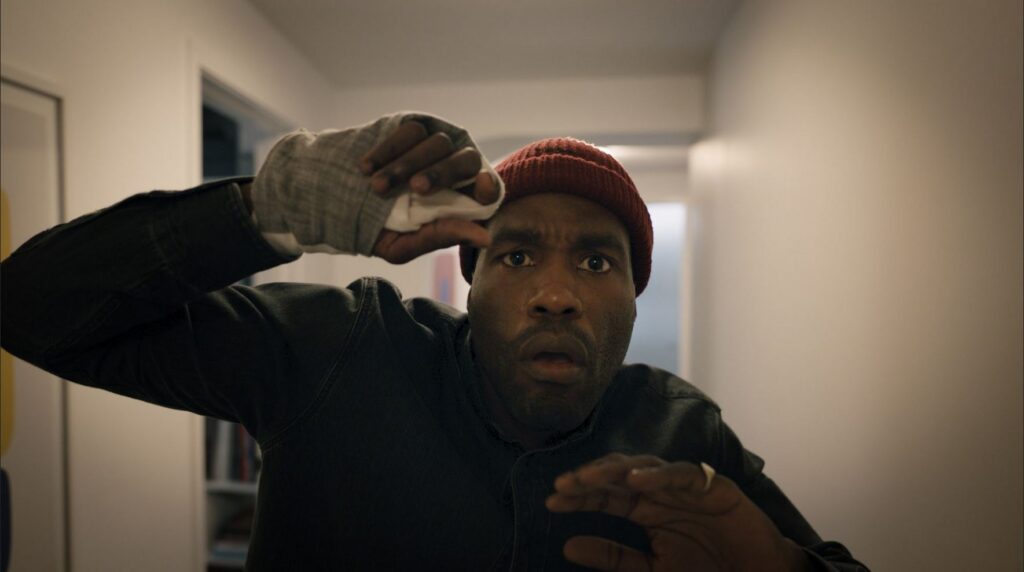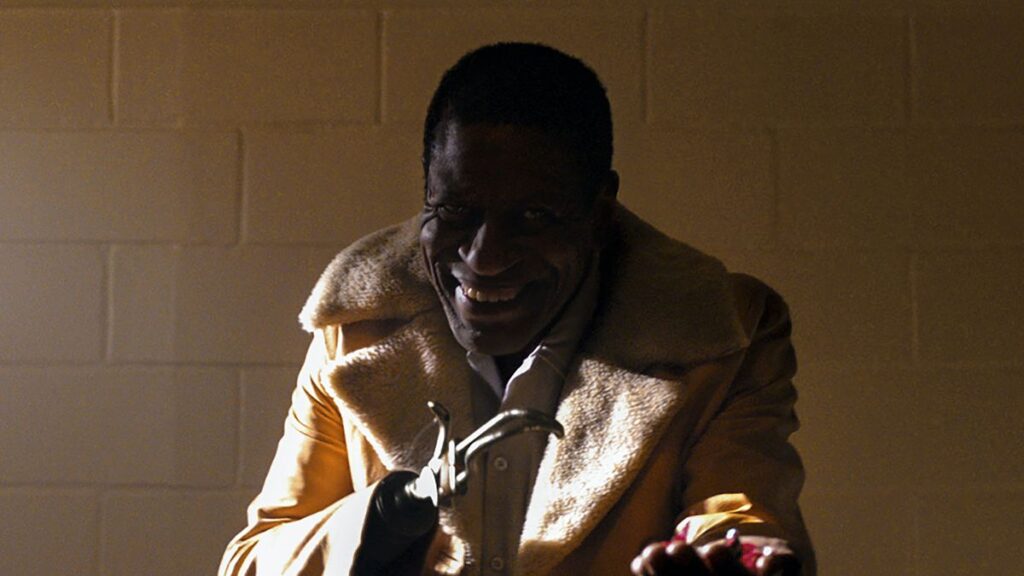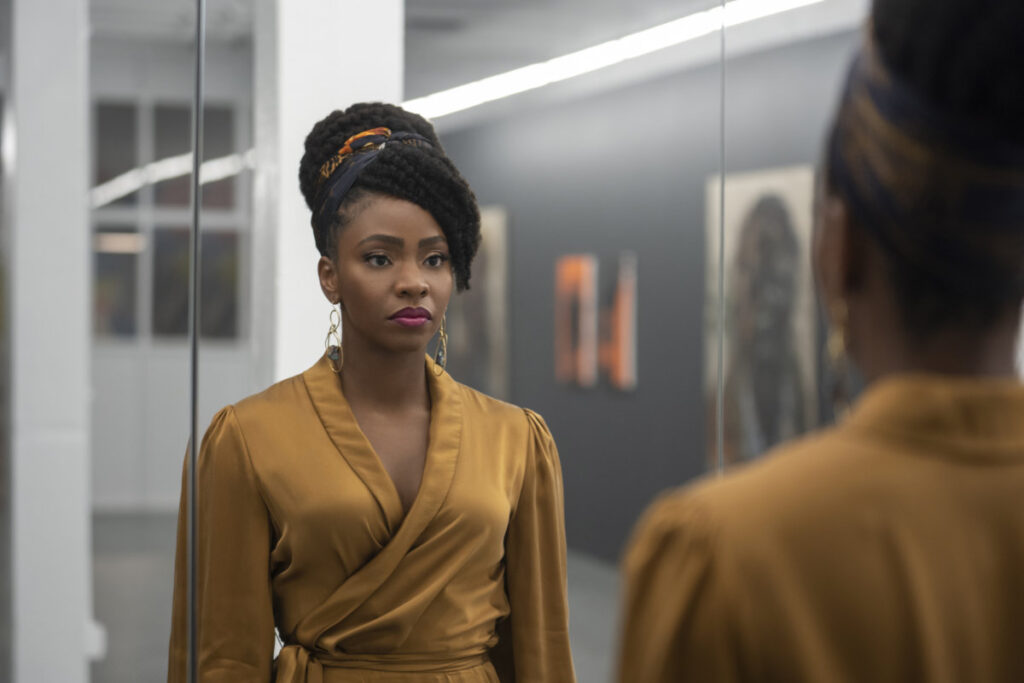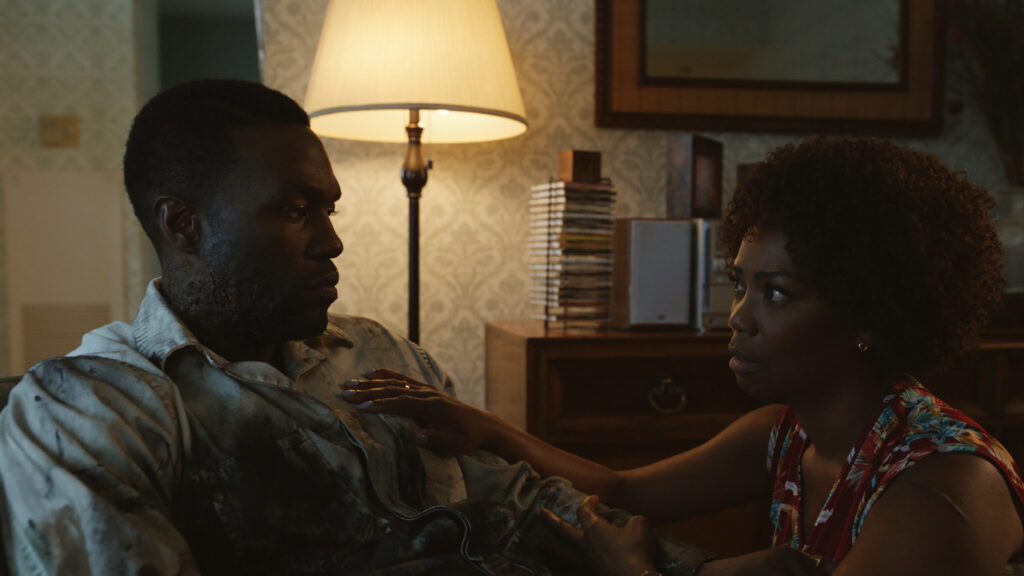
The premise of Candyman has always struck me as a peculiar illustration of risk versus reward. Most supernatural summonings involve some sort of Faustian bargain; sure, the heroes of Bedazzled, The Picture of Dorian Grey, and Rosemary’s Baby all sold their souls (or their son), but they at least got something out of it. Here, the lore is far less complicated, and commensurately less appetizing: Say the name “Candyman” five times while looking into the mirror, and his reflection will appear… and will promptly kill you. To me, such a proposition is in no way enticing. At least the dude in Mephisto can claim to have been duped; if you want to blame someone for getting your throat sliced open by Candyman, all you need to do is look in the mirror.
To its credit, this new Candyman, which was directed by Nia DaCosta from a script she wrote with Win Rosenfeld and modern horror impresario Jordan Peele, is at least partly aware of this absurdity; when one character learns of the legend, she understandably asks, “Who would do that?” followed by a very funny smash cut to a gaggle of vapid high school girls commencing the ritual. In any event, narrative plausibility is not DaCosta’s concern. She’s more interested in fusing the visceral with the political—in making a spine-chilling horror movie that doubles as a trenchant commentary on Black life in contemporary America. She isn’t entirely successful. As a metaphorical text, Candyman is admirable but awkward, struggling to vibrate with its desired resonance. But as a fright fest, it’s pretty good—not exactly scary, but engrossing and polished. There’s plenty of poise to go along with the blood.

There’s plenty of that too, though DaCosta is patient when it comes to carving up flesh. The movie’s prologue, set in 1977 in the Chicago housing project of Cabrini-Green, is one of those ominous, mood-setting openers; there are creepy locations (a basement laundry room) and disturbing sights (a man with a hook emerging from the walls), but the camera cuts away before any bodies hit the floor, transitioning instead to an eerie title sequence in which skyscrapers are seemingly suspended within a choking fog. (Even the introductory logos appear backwards, priming your brain to anticipate a mirror-filled universe.) Candyman runs a trim 91 minutes, and DaCosta handles exposition with both efficiency and flair; most of the film’s flashbacks transpire via black-and-white shadow-puppet animation, an unnerving but eye-catching method that deepens the surrealistic atmosphere.
Not that Candyman is especially complicated or deep. Its ostensible hero and potential villain is Anthony (Yahya Abdul-Mateen II), a failing painter stuck in a creative rut. He’s supported by his girlfriend, the up-and-coming gallery director Brianna (Teyonah Parris); the imbalance in their respective levels of success, and the invisible tension it seems to provoke, is one of a handful of threads that the script gently tugs at before letting drop. But Anthony receives a burst of inspiration when he encounters William (the invaluable Colman Domingo), a Cabrini-Green local who tells him the presumably apocryphal tale of a Black man with a hook in place of a hand and a tendency to wreak havoc in mirrors. (The conveyed backstory of a researcher named Helen Lyle and the baby she abducted will be familiar to fans of the 1992 cult classic, which starred Virginia Madsen and Tony Todd, both of whom make cameos here; this was my first foray into the world of Candyman, but I never felt lost.) Shrugging off the painful bee sting he receives (don’t worry, I’m sure it’s nothing), Anthony throws himself into his work and produces a new exhibit for Brianna’s gallery, an amalgation of paint, glass, and fable that’s not-so-invitingly titled, “Say His Name.”

Or don’t, would be my advice. Still, characters in horror pictures tend to possess more bravado than sense, and so much of Candyman involves its titular phantom meting out just desserts to imbeciles foolish enough to invoke his presence. These sequences of panic and bloodshed are more suspenseful than terrifying, but DaCosta executes them with confidence and panache, along with a dash of playful showmanship. (The latter quality was anathema to her first feature, Little Woods, which sported a terrific Tessa Thompson performance but was visually undistinguished; DaCosta’s resources continue to grow exponentially, as her next project is a sequel to Captain Marvel.) An early double murder in the gallery, where a woman earns her fate by constantly name-checking Joy Division songs while wearing an Unknown Pleasures T-shirt, throbs with menacing color, all deep blues and dark reds. Later, we watch a pompous art critic meet her grisly end with the camera stationed far outside her art-deco apartment, meaning her lifeless body smashes against a window with unsettling silence. And remember those dumb teenagers in the school bathroom? Their demise unfolds from the vantage of a cowering bystander, helplessly peeking into her vanity as bones snap and hearts stop.
It’s all deftly done, but Candyman doesn’t devote the same level of detail to its characters. That aforementioned critic, for example, is an irritatingly lazy stereotype—the bitter opportunist who savors tearing down the work of more talented artists, except when she senses their reputational ascendance—and the movie’s purported insight into the art world unfortunately recalls Velvet Buzzsaw, Dan Gilroy’s risible satire of critical corruption. The main players don’t fare much better. Anthony and Brianna seem reasonably pleasant—frequent shots of Abdul-Mateen shirtless are more than pleasant—but they aren’t fully realized people so much as cogs who get caught in the complex machinery of the plot.

This granular shortcoming is perhaps understandable, given the screenplay’s big-picture interest in staking a claim on the racially conscious territory that Peele has recently popularized with Get Out and Us. Yet while Candyman’s political ambition is noteworthy, its execution is muddled. Anthony’s physical disintregation is striking—the makeup team has done excellent work, and the shot of a rotted fingernail being removed has lost none of its queasy kick—but his moral arc is less clear. And though there are angry speeches about gentrification and some sinister echoes of police brutality, the film never adequately yokes its topical rage to its elemental ravagings.
Except, that is, in its final scene, when Candyman at long last acquires a blunt power proportionate to its depiction of a vengeful killer surrounded by swarms of bees. (In a funny throwaway line, someone remarks that people are “buzzing” about Anthony’s work.) Yet the sequence is also just another demonstration of its director’s fearsome style. I can’t help but wish the movie were better; when it comes to joining the ranks of modern horror triumphs, this Candyman can’t. But as a calling card for DaCosta’s gifts, it’s impressive. We’ll all be saying her name soon enough.
Grade: B-
Jeremy Beck is the editor-in-chief of MovieManifesto. He watches more movies and television than he probably should.
